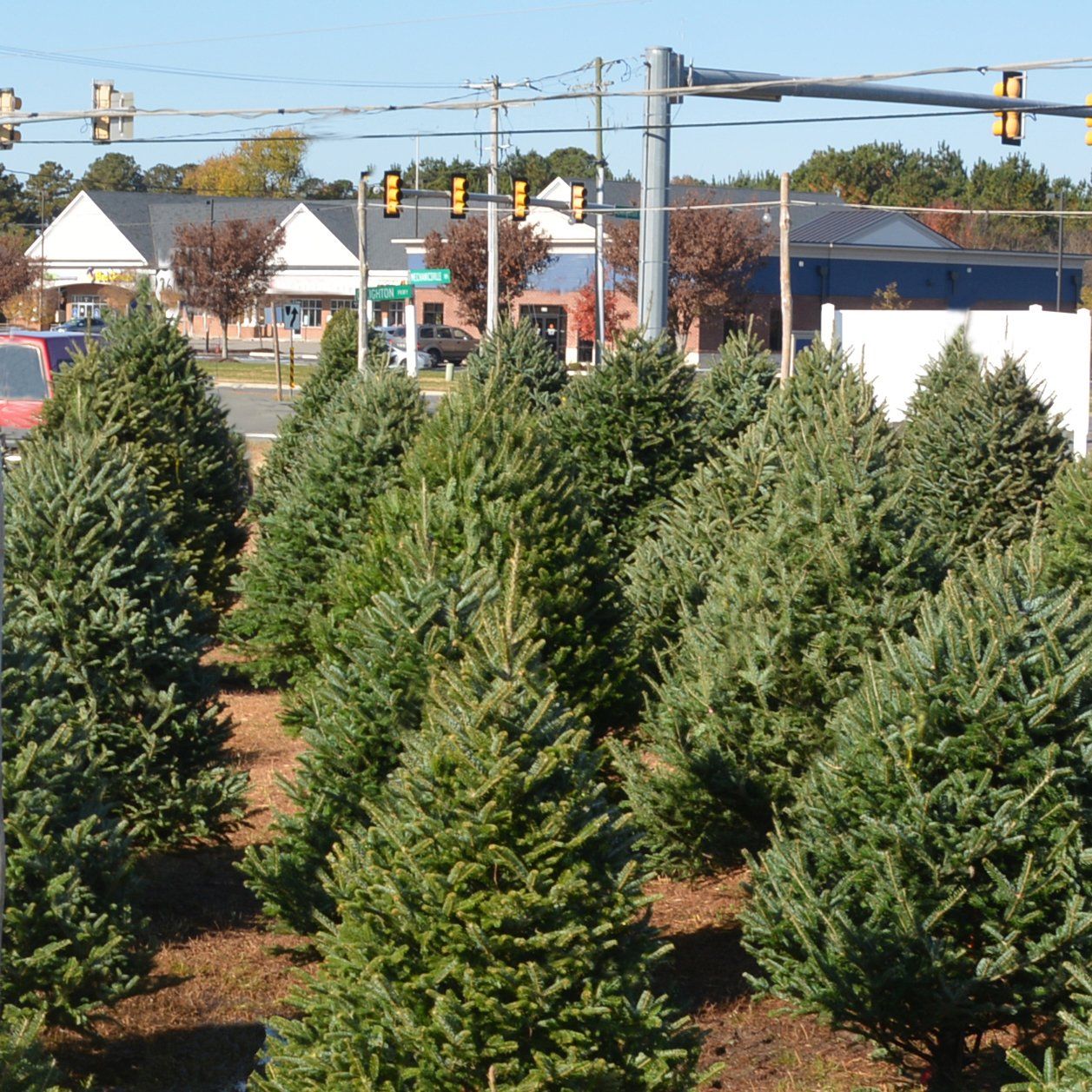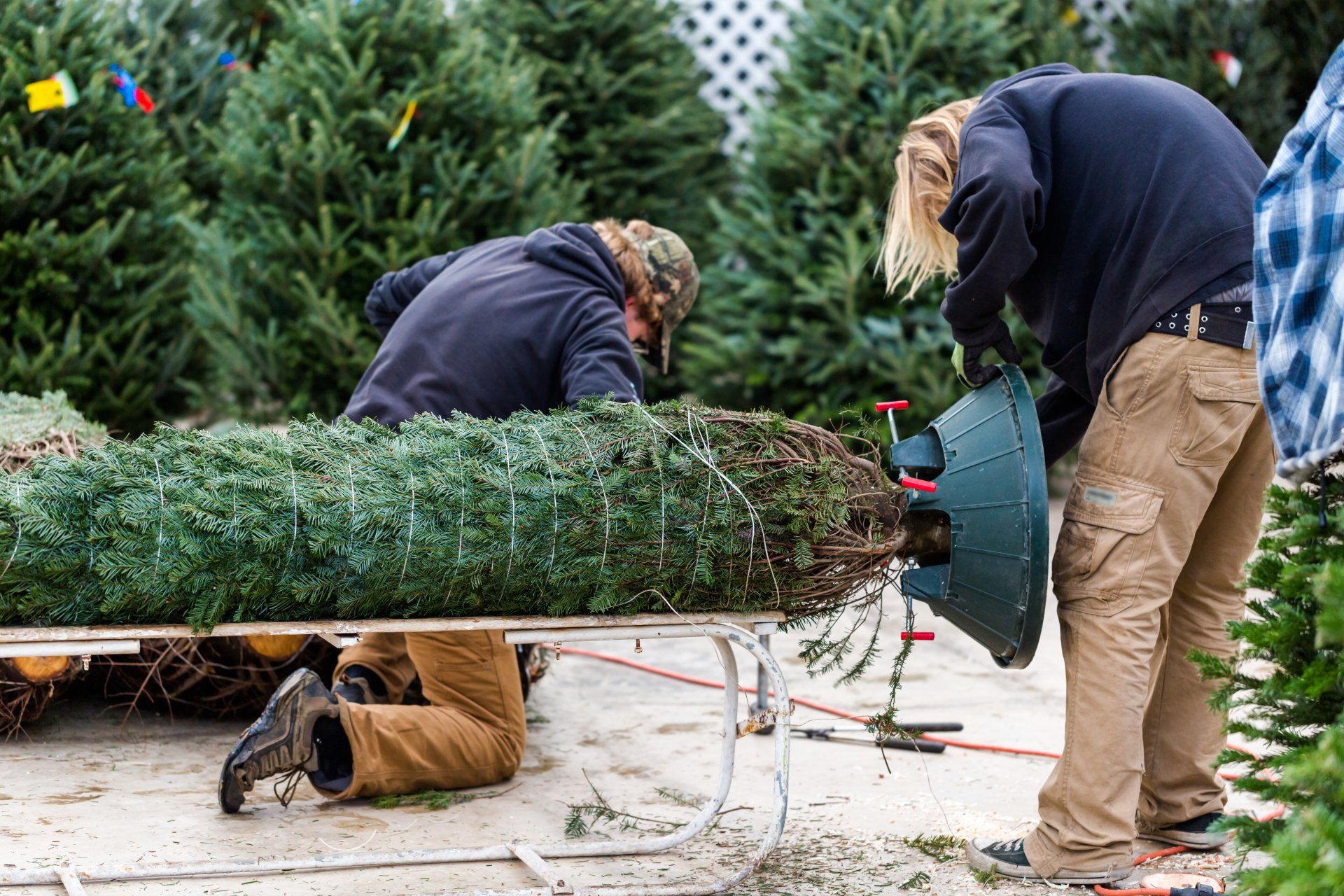Tree Selection Tips
Tree Selection Tips
Pick Out Your Perfect Tree with Our Tips!
1. Determine where you will place the tree inside your home.
Choose a location away from heat sources – air ducts, fireplaces and TVs. Tree location in your home will dictate how many sides of the tree need to be “picture perfect” – 4 sides if displayed in a large window, 3 sides if displayed on a wall, 2 sides if displayed in a corner.
2. Measure the dimensions of the available space in the preferred location.
Christmas trees on the lot may not appear large due to the open area but don’t be fooled. Be sure to consider the width of your prospective tree. Take a measuring tape with you to the tree lot.
3. Choose a tree with a healthy green appearance.
Test the freshness by running a branch through your hand –a fresh tree will have few needles come off. It’s normal for fir trees to have a few inner brown needles because outer branches block the sunlight from hitting the needles.
4. Consider the type of decorations for your tree.
Do you need heavier branches or will light airy branches suffice? Do you have big decorations or smaller ones that can fit well on a very full tree? See Christmas Tree Varieties for more information.
5. Select a tree with a straight handle that is 6-8 inches long.
This is measured from the bottom to the first whorl of branches. A tree handle of this size is necessary to set up your tree in the stand.
1. Determine where you will place the tree inside your home.
Choose a location away from heat sources – air ducts, fireplaces and TVs. Tree location in your home will dictate how many sides of the tree need to be “picture perfect” – 4 sides if displayed in a large window, 3 sides if displayed on a wall, 2 sides if displayed in a corner.
2. Measure the dimensions of the available space in the preferred location.
Christmas trees on the lot may not appear large due to the open area but don’t be fooled. Be sure to consider the width of your prospective tree. Take a measuring tape with you to the tree lot.
3. Choose a tree with a healthy green appearance.
Test the freshness by running a branch through your hand –a fresh tree will have few needles come off. It’s normal for fir trees to have a few inner brown needles because outer branches block the sunlight from hitting the needles.
4. Consider the type of decorations for your tree.
Do you need heavier branches or will light airy branches suffice? Do you have big decorations or smaller ones that can fit well on a very full tree? See Christmas Tree Varieties for more information.
5. Select a tree with a straight handle that is 6-8 inches long.
This is measured from the bottom to the first whorl of branches. A tree handle of this size is necessary to set up your tree in the stand.
6. Measure your tree stand to determine the maximum size tree butt it will accommodate.
Since the outer layers of wood facilitate water intake, you must avoid shaving the sides of the tree trunk down to fit a stand. Either pick a tree with a smaller butt or buy a new tree stand.
7. Ask important questions that determine the trees' longevity.
Ask the retailer where the trees come from, when they were cut and how they are stored.
8. Visit your local Christmas tree lot early in the season.
Come get your tree early so you have the best selection. If you plan to put the tree up later inside your home, place the tree in a bucket of water and store in a shady location out of the wind.
9. Prepare the items you need to secure your tree on or inside your vehicle.
Bring rope, bungees, ratchet straps, etc. if you need to tie the tree on your vehicle. Protect your vehicle’s roof and inside by bringing tarps, blankets, sheets, etc.
10. Request a fresh cut so your tree can begin drinking water.
Once your tree has been selected, request a fresh cut off the butt of at least ½ inch. This cut exposes cells that absorb water and allow the water to move upwards into the tree.
6. Measure your tree stand to determine the maximum size tree butt it will accommodate.
Since the outer layers of wood facilitate water intake, you must avoid shaving the sides of the tree trunk down to fit a stand. Either pick a tree with a smaller butt or buy a new tree stand.
7. Ask important questions that determine the trees' longevity.
Ask the retailer where the trees come from, when they were cut and how they are stored.
8. Visit your local Christmas tree lot early in the season.
Come get your tree early so you have the best selection. If you plan to put the tree up later inside your home, place the tree in a bucket of water and store in a shady location out of the wind.



